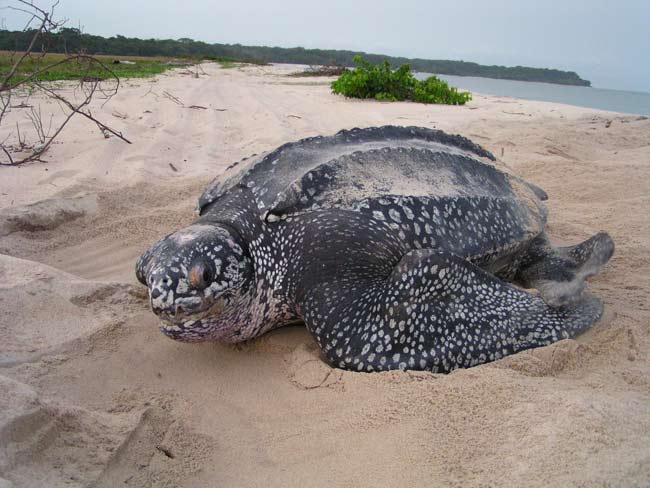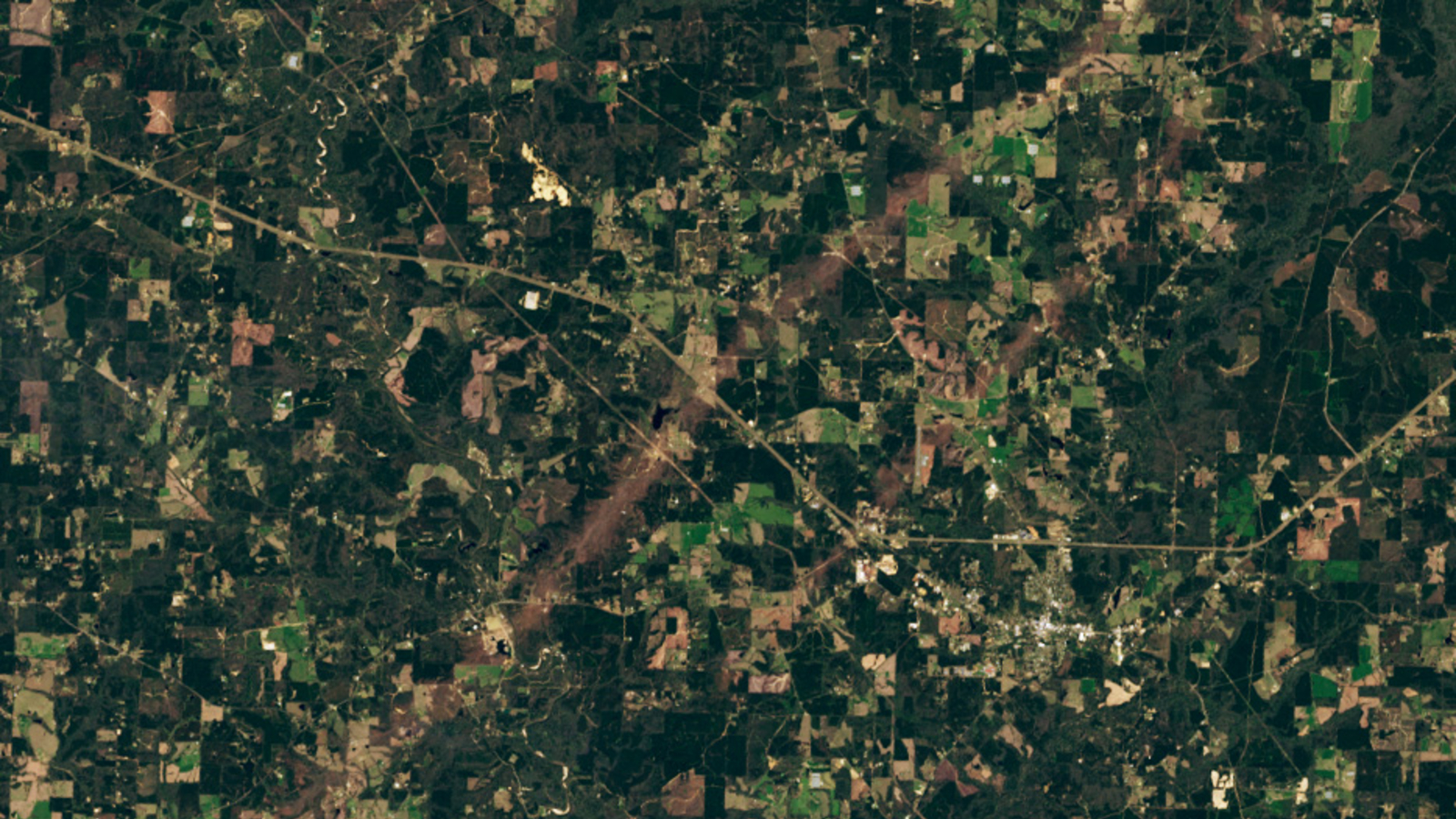Largest Population of Leatherback Sea Turtles Found

The world's largest nesting population of leatherback sea turtles has been identified in Africa, it was announced today.
Land and aerial surveys indicate a population of between 15,730 and 41,373 female turtles use the nesting beaches in Gabon, West Africa.
Leatherbacks are of intense conservation concern around the world after populations in the Indo-Pacific crashed by more than 90 percent in the 1980s and 1990s. The International Union for Conservation of Nature (IUCN) lists leatherback turtles as critically endangered globally, but detailed population assessments in much of the Atlantic, especially Africa, are lacking.
The research was led by the University of Exeter working in collaboration with the Wildlife Conservation Society (WCS) which spearheads the Gabon Sea Turtle Partnership, a network of organizations concerned with the protection of marine turtles in Gabon
About leatherback turtles
- The leatherback is the largest sea turtle, reaching up to nearly 6.5 feet (2 meters) in length and weighing 1,190 pounds (540kg).
- Unlike other sea turtles, the leatherback does not have a hard shell. Its shell is made-up of a mosaic of small bones covered by firm, rubbery skin with seven longitudinal ridges.
- Leatherbacks are the most widely spread marine turtles, and are found in the Pacific, Indian and Atlantic oceans, particularly in tropical regions.
- Leatherbacks are the deepest diving of all sea turtles. The deepest recorded dive is ¾ mile (1.2 kilometers), which is slightly more than the deepest known dive of a sperm whale.
- As with other reptiles, the sex of leatherbacks-to-be is determined by the temperature of eggs during incubation. With leatherbacks, temperatures above 84 degrees F, (29 degrees C) will result in female hatchlings.
- Leatherbacks are strong swimmers and tagged individuals have been known to cross ocean basins and are known to travel many thousands of miles in search of their jellyfish prey.
{{ video="LS_090518_Leatherback-Turtle" title="" caption="" }}
Aerial surveys
Get the world’s most fascinating discoveries delivered straight to your inbox.
During three nesting seasons between 2002 and 2007, the team's members carried out a comprehensive survey of marine turtles in Gabon. This involved aerial surveys along Gabon's 372 mile (600 kilometer) coast, using video to capture footage for evaluation, and detailed ground-based monitoring.
By covering the entire coastline, the team was not only able to estimate the number of nests and nesting females, but also to identify the key sites for leatherback nesting, data which are crucial to developing conservation management plans for the species. Leatherbacks were first described nesting in Gabon in 1984.
The new finding on the turtle population was published in the May issue of the journal Biological Conservation.
"We knew that Gabon was an important nesting site for leatherback turtles but until now had little idea of the size of the population or its global ranking, said Matthew Witt of the University of Exeter, lead author of the research paper. "We are now focusing our efforts on working with local agencies to coordinate conservation efforts to ensure this population is protected against the threats from illegal fisheries, nest poaching, pollution and habitat disturbance, and climate change."
Protected areas are key
The study also revealed that around 79 percent of the turtles' nesting occurs within National Parks and other protected areas.
"These findings show the critical importance of protected areas to maintain populations of sea turtles," said Angela Formia of the Wildlife Conservation Society, a co-author of the paper. "Gabon should be commended for creating a network of National Parks in 2002 that have provided a sanctuary for this endangered species as well as other rare wildlife."
The study was made possible through funding by the Natural Environment Research Council, the United States Fish and Wildlife Service, and the Marine Turtle Conservation Fund (U.S Department of the Interior). To see turtles currently being tracked from Gabon see: http://www.seaturtle.org/tracking/?project_id=340.
- Video – World's Largest Nesting Population of Leatherback Turtles
- Top 10 Most Incredible Animal Journeys
- Gallery: Under the Sea

